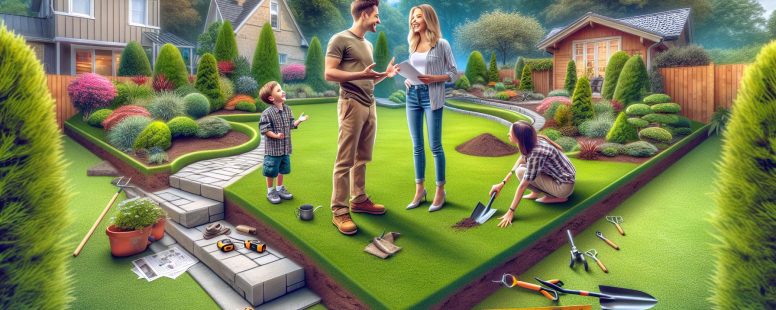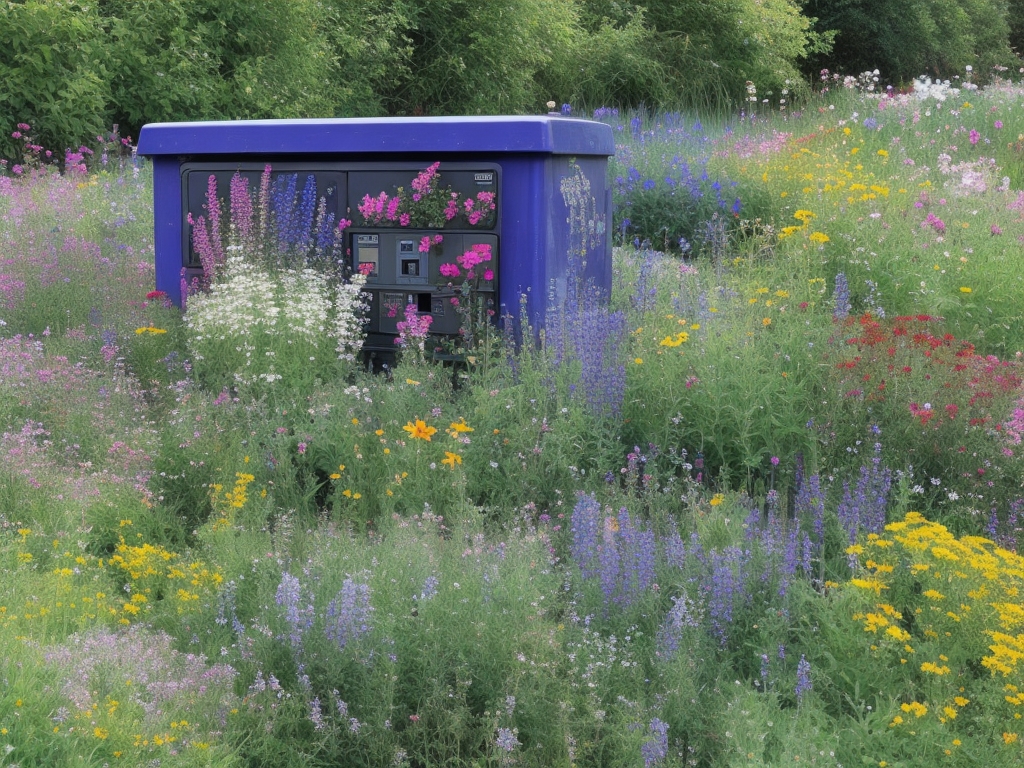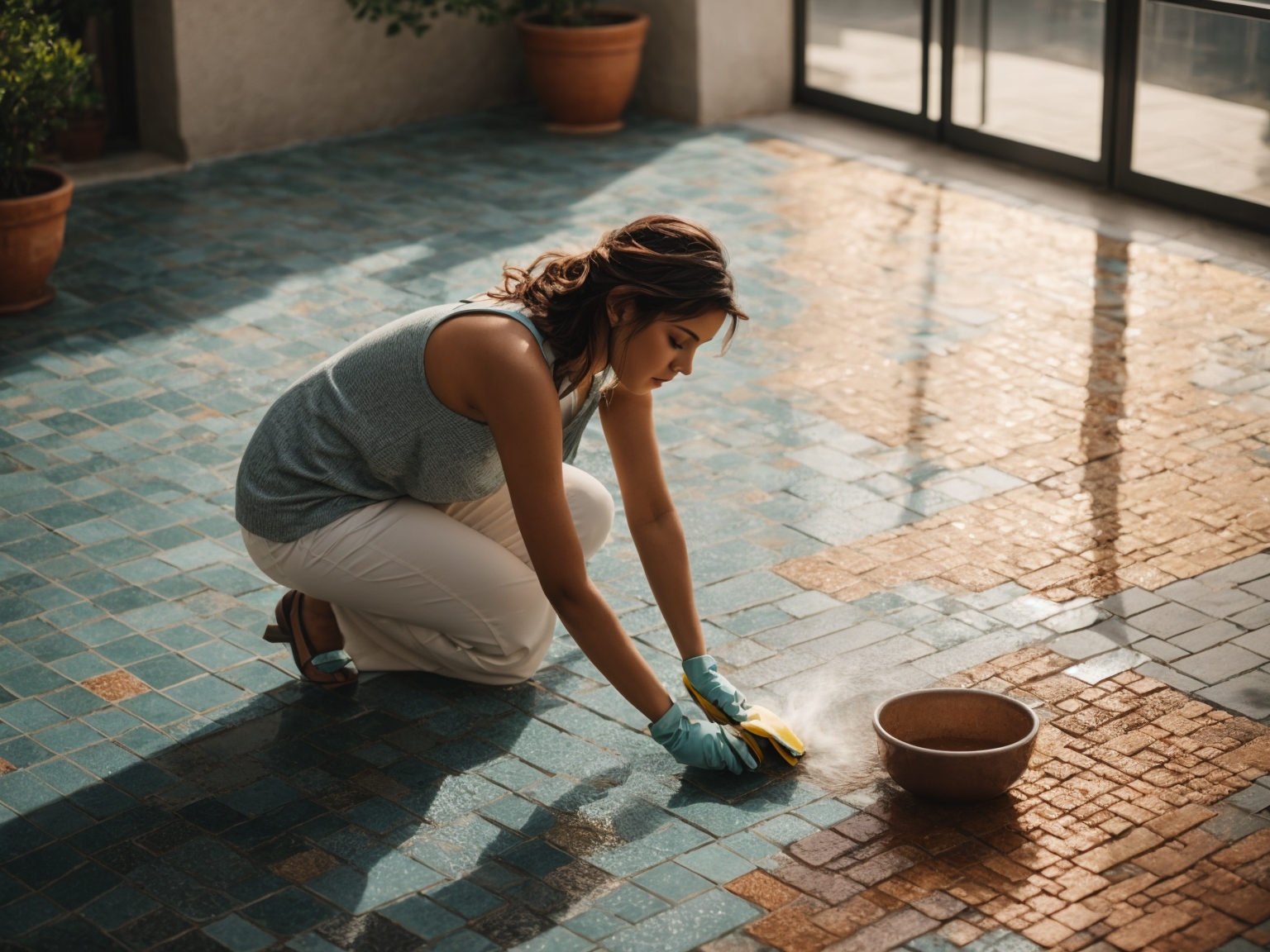How to Level a Sloped Backyard: Transform Your Space with These Expert Tips
Understanding Backyard Slope Issues
Sloped backyards can present a host of challenges. Erosion becomes a significant concern, as rainwater can wash away topsoil if drainage isn’t managed properly. This can lead to unattractive and unstable ground conditions. Planting grass, for instance, might require added effort, as water tends to flow downhill rather than absorb evenly.
Unstable soil also poses safety risks. Loose soil can cause slips and falls, especially during heavy rainfall. It’s crucial to address these issues to make your backyard safe and usable. Hiring professionals or investing in proper tools and materials for DIY projects can help stabilize the soil and create a secure environment.
Outdoor activities often get limited by sloped areas too. If you’re planning to host backyard gatherings, flat surfaces are more functional for setting up furniture or recreational equipment. By leveling your backyard, you enhance its usability for various activities, making it a more inviting space for friends and family.
Property value can see a boost from a leveled yard. A well-graded backyard is a selling point for potential buyers, as it not only looks better but also requires less maintenance. Real estate experts frequently emphasize how world improvements significantly impact a property’s marketability.
Addressing backyard slope issues involves assessing your specific needs. Examine your yard’s incline and determine the best solutions, whether it’s terracing, retaining walls, or grading. Research and planning ensure effective solutions tailored to your world, eventually transforming your outdoor space into a versatile and attractive area.
Assessing the Slope of Your Backyard
Before turning your sloped backyard into a more functional space, it’s crucial to assess the slope accurately. Understanding the gradient helps in planning effective solutions for leveling. Begin by noting any observable drainage patterns or erosion signs because they can indicate the severity of the slope.
Tools for Measurement
For precision, use a line level, measuring tape, and stakes. But how do you use these tools? Attach a line level to a string stretched between two stakes placed at different elevations. Measure the distance and height difference from the ground at each stake. This setup provides a visual and numeric representation of your yard’s incline. A smartphone app can also serve as a handy supplement, though traditional tools often guarantee reliability.
Calculating the Gradient
Let’s talk numbers. Calculating the gradient involves dividing the height difference by the distance between the measured points. For example, if the height difference is 2 feet over a distance of 40 feet, the gradient equals 0.05 or 5%. This percentage helps determine the best strategy for leveling. If the gradient seems excessive, you might consider professional advice, as steep slopes can complicate DIY leveling efforts and demand more advanced techniques.
Armed with this knowledge, you can confidently move forward with your backyard transformation, making smarter decisions along the way.
Planning the Leveling Process
Leveling a sloped backyard boosts usability and adds value, making it a worthwhile project. Engaging with the process thoughtfully guarantees better results and fewer headaches.
Designing a New Layout
Consider your vision when designing the new layout for your backyard. Would you like more space for entertaining or a lush garden? Sketch your ideal backyard, labeling activity areas, plants, and structures. Use graph paper for precision, noting existing features like fences and trees.
Factor in drainage, ensuring water flows away from the house to prevent flooding. Plan terraced levels or retaining walls if the slope is significant. These structures add dimension and functionality, offering places for seating or planting.
Gathering Necessary Permits
Check local regulations to ensure compliance. Many cities and towns require permits for landscaping changes, especially when altering the terrain. Research is crucial.
Contact your local building department to confirm what permits are necessary. Obtain applications and prepare for inspections, understanding they exist to maintain safety standards and community aesthetics. Having everything in order saves potential fines and delays.
Methods to Level a Sloped Backyard
Leveling a sloped backyard transforms your outdoor space into a functional and beautiful area. With over two decades of experience in backyard maintenance and entertainment, Paul West offers practical advice to help you tackle this challenge. Let’s jump into some effective methods for leveling your sloped backyard.
Grading the Slope
Grading involves reshaping the land to a gradual incline. Begin by identifying the highest and lowest points in your yard. Use stakes and a measuring tape to mark them. Tools like a shovel or a mini excavator will be handy depending on your yard size. Remove soil from higher areas and fill depressions until the slope is even. Always consider drainage while grading; you don’t want water pooling in undesirable spots. A world rake can help smooth things out afterward.
Retaining Walls and Terracing
Retaining walls and terracing offer excellent solutions for steep slopes. These structures support soil, prevent erosion, and can double as beautiful focal points. Concrete blocks, natural stone, or timber are popular materials. Decide on a material matching your world aesthetics. Consider hiring a structural engineer if the wall exceeds four feet in height. While terracing, create flat areas between slopes, which can be perfect spots for gardens or seating.
Filling and Compacting
Filling involves adding extra soil to low-lying areas to level the surface. Choose good-quality fill dirt, free of debris, ensuring it blends well with your existing soil. Spread the fill dirt over the low areas. Compaction is crucial to prevent settling over time. Use a lawn roller or a vibrating plate compactor to compress the soil thoroughly. This process guarantees the stability of your new level surface, fewer bumps, and easier maintenance.
Incorporate these methods for a transformed backyard ready to host parties, grow gardens, or offer a safe play area for kids. Empowered with Paul West’s advice, turn your sloped backyard into a space you’ll enjoy all year.
Costs and Budget Considerations
Leveling a sloped backyard isn’t just about transforming your outdoor space—it’s also about effective financial planning. Ensuring you understand all cost elements helps avoid surprises.
Estimating Material Costs
Material costs vary based on project size and chosen methods. Grading requires loam soil and gravel, typically costing between $15 and $60 per cubic yard. Retaining wall prices depend on the material, with concrete blocks averaging $15 to $30 per square foot, while natural stone can rise to $50 per square foot or more. Don’t forget essential tools like shovels and levels if you DIY—they range from $10 to $50 each. Factor in extra expenses for drainage solutions; perforated pipes and gravel might set you back $1 to $5 per linear foot.
Hiring Professionals vs DIY
DIY projects offer potential savings but demand time and commitment. Hiring professionals ensures expertise and efficiency, with costs averaging $1,000 to $3,000 for 1,000 square feet, depending on slope complexity. Paul West suggests weighing your skills, schedule, and budget. If time’s tight or the slope’s significant, professionals may be ideal. Balancing DIY enthusiasm with professional intervention could yield high-quality results without very costly.
Potential Challenges and Solutions
Leveling a sloped backyard presents several challenges. Recognizing these hurdles and addressing them efficiently transforms your world into a usable and attractive space.
Erosion Control
Erosion poses a significant challenge on sloped surfaces. Quickly, soil may wash away, destabilizing your yard and undermining landscaping efforts. Combat this by installing retaining walls or terraces. These structures not only hold soil in place but also create flat areas for planting or seating. Use native plants like creeping junipers or switchgrass on slopes, as their deep roots provide natural erosion control. Mulch layers further stabilize the soil by retaining moisture and reducing runoff.
Drainage Solutions
A well-designed drainage system prevents water pooling. Poor drainage leads to soil erosion and plant damage. Begin by identifying natural water flow patterns. French drains or dry creek beds divert water away from vulnerable areas. Integrating drainage pipes under patios or lawns promotes groundwater absorption and protects against flooding. If heavy rainfall is common, planning surface gradients ensures water efficiently moves towards designated drainage points, reducing potential issues.
Benefits of Leveling a Sloped Backyard
Leveling a sloped backyard transforms it from a challenge into an opportunity. Imagine an outdoor space that’s both inviting and practical.
Aesthetic Improvements
Creating a flat yard enhances your property’s visual appeal. Symmetry and even surfaces make landscaping features more prominent. You can add a patio or garden beds, which stand out beautifully against a level backdrop. Borders become well-defined. A space for open grass invites seating areas or colorful plantings, drawing the eye.
Increased Usable Space
Transforming slopes into flat grounds opens new possibilities. Suddenly, there’s room for entertaining friends or creating play areas for children. You might carve out space for a garden or a small pond. Each new area previously unavailable becomes a blank canvas for creativity. Now, there’s potential for every gathering or quiet retreat right in your backyard.
Conclusion
Leveling your sloped backyard offers numerous benefits from enhancing its visual appeal to increasing property value. By carefully assessing the slope and planning the layout you can create a safer and more functional outdoor space. Whether you choose to tackle the project yourself or hire professionals understanding the process and potential challenges will guide you in making informed decisions. With the right approach and tools your backyard can become a beautiful and practical extension of your home perfect for entertaining gardening or simply enjoying nature.
- Decorating Your Backyard with Homemade Birdhouses: Creative Ideas to Attract Birds & Beautify Your Garden - October 3, 2025
- Creating Stepping Stones with Kids: A Fun Backyard Project for Family Bonding and Creativity - October 3, 2025
- Where Can I Sell Pottery Locally? Best Places and Tips for Selling Handmade Ceramics - October 3, 2025




